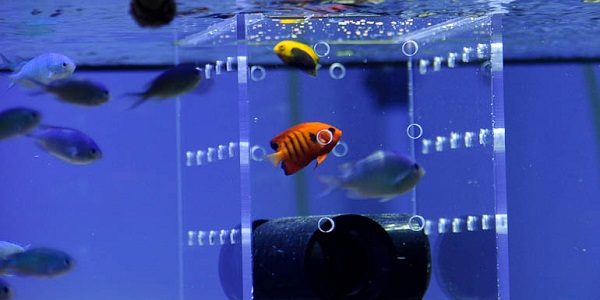Bringing new fish into your tank is always exciting and you want to ensure everything goes well without damaging the newcomer in any way. You will be surprised to know there are actually clear steps to follow in order to acclimate your fish properly and doing something wrong can hurt or even kill the fish.

Follow these rules and everything will go well, even if you are a beginner:
- Never put fish in a tank that is not cycled. It does not matter how big, small, resistant, or sensitive the fish; it will never have a healthy life in these conditions. Once you set up your tank, wait a few weeks before you start to introduce the fish to the new tank. In this way you will know the water does not contain any harmful substances and the fish will adapt in a matter of hours.
- Do not bring a new fish home in a transparent container. When you bring the new fish home, you have to make sure nothing will damage them on the way. A stress factor can be the natural light and in some cases this can be fatal for the fish. Instead of bringing them in a transparent container, place the container in a paper bag that will not let natural light pass through. You can remove the paper bag when you are in your home in artificial and moderate light.
- Turn off the aeration in your tank. While you transported the new fish, it did not have high levels of oxygen. Being placed in a tank with high oxygen levels can shock the fish and cause death. Don’t worry—this will not affect the other fish in any way.
- Put the container (or the bag) with the fish into the tank, without opening it. If you open it, the fish will lose its oxygen reserve very quickly. This is meant to help the fish adapt to the new surroundings, but also change the temperature of the water to a suitable one. You can leave the container in tank for 30 minutes or until you are sure the water in the container has the same temperature as the water in the tank.
- Open the container and put some water from the tank into the container. Of course, you will only put a small quantity of water, as the water parameters are probably very different and the fish needs time to adapt. Repeat this every five minutes, each time adding a little more water from the tank. When you see the bag is almost full with water from the tank you can let it flow in the tank for 30 minutes, to make sure that the fish is completely adapted.
- After 30 minutes, when your fish is already used to the new conditions, net the fish out of the bag and release it into the tank. Make sure not to mix the water in the bag with the one in your tank, as you never know what kind of parasites or bacteria it can carry. In general, it is better to avoid bringing anything from another tank unless you the water is clean and the equipment used in that tank is not infected.
- Keep an eye on the fish; most of the time everything goes well from the first day, but you still have to pay attention to this fish for a period of time. It might not get along well with the other fish you have in your tank or it may not get enough light or space to swim. If you notice a change in the behavior of the fish, it means something is wrong and you should discuss the issues with a professional.
Conclusion
It is easy to take care of your fish once settled in a new tank, as long as you know what conditions and types of food is needed. Make sure to only feed the fish as needed, as too much food can destroy the chemical balance of the water. Also, too much light will make algae appear, and it is quite a struggle to rid your tank of it.
Have fun, enjoy your tank, and remember you can always ask for advice!
